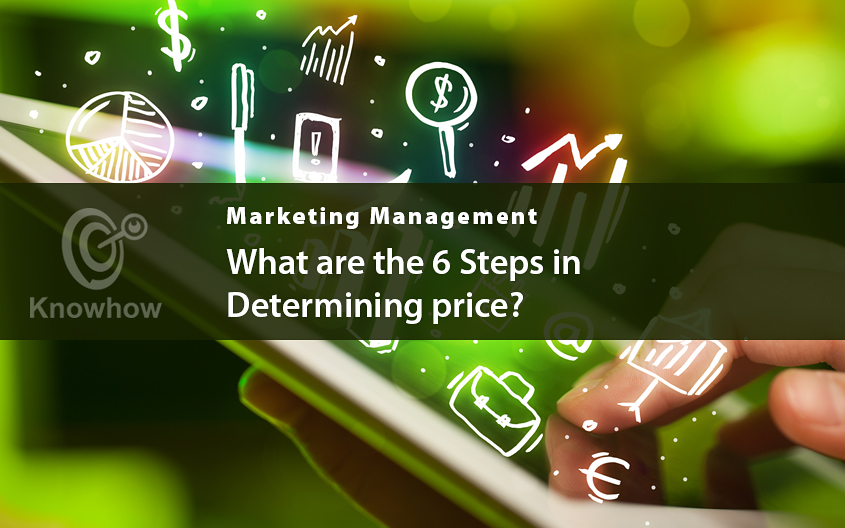
Developing a Price Strategy Isn’t Difficult If You Follow the 6-Step Model
When you look at it from a different perspective, the marketing mix for any company is basically the same. It always consists of 4 Ps – product, price, place, and promotion. The price is the most relevant P in this case, as it directly affects the company’s bottom line. If the company wants to survive, its products have to be profitable. However, you can’t just slap any price on a product. You need to have a price strategy that will tell your consumers what kind of value you’re providing through your products.
Companies run into multitudes of price-related problems on the market. For some, the Internet is the number one issue. Websites like eBay and Priceline encourage their users to name their prices for services and products. That kind of consumer awareness when it comes to price information means that developing a strategy for the pricing process is now relevant more than ever.
A good strategy to setting prices is dynamic, and it reflects changing conditions on the market while following what the competition is doing.
.
How to price a product? Here are the steps!
Let’s take a look at the following steps on the price setting process. So what is the first step to setting the price of your product/service?
Step 1: Selecting the pricing objective
Pricing can make reaching the company’s positioning goals easier. If the company has to work over its capacity or handle tough competition, the price of the product would need to take into account two factors. The variable costs and a part of the fixed cost.
Although short-term, this strategy can help boost initial performance for companies who are introducing revolutionary products or services.
If a company is looking to maximise the profit, it can set a higher price by considering costs and the competition. On the other hand, if a company is looking to improve and maximise its market share, it will set a lower price to generate maximum volume.
However lucrative, this strategy can be risky, as it can cause consumer-related or legal issues.
Step 2: Determining demand
According to the law of economics, there’s a definite demand for a product at every price level. However, this law depends on the nature of the product in question. For instance, demand rises with the price increase for luxury goods, while the demand for a commodity will fall as the price rises.
What companies must do is plan the demand curve while understanding price sensitivity. It is possible to estimate the demand curve by analysing historical data or performing price-related tests. That way, a company can gain a deeper insight into how much the consumers are willing to pay for a specific product or service.
Step 3: Estimating costs – ensuring profits
In order to continue working successfully, companies need to manage their costs so that they are left with a good profit margin. Therefore, to achieve this, a company needs to establish a production level at which it will be able to maintain its fixed and variable costs.
In general, the cost per unit decreases as production level increases. That is simply due to the learning curve effect that comes with increased experience. So to ensure you profit with this strategy, you need to allocate the costs and set the price accordingly.
Step 4: Analysing Competitors’ Costs, Prices, and Offers
Every company has to track its competitors carefully. That especially goes for pricing, costs, and promotional offers. Companies need to know just how much their competitors’ prices can fluctuate in comparison to their own. They also need to be ready to adjust to those fluctuations with their own offers.
Step 5: Choosing your pricing method
There are several methods you can go for with regards to the pricing process of your products or services.
These are the most popular ones:
- The markup method means that you’re setting a price based on your desired profit level.
- Target return means that you’re setting a price based on the company’s desired ROI.
- Perceived value is as simple as setting a price based on how much your consumers believe your product or service is worth to them in reality.
There are also auction type pricing and group pricing methods, but they are less popular.
Step 6: Determining the final price
The previous steps will help you set a price, but the final word goes to your consumers. Do market research to make sure that you’re not under or overcharging for your products or services.
In the End
You should always be ready to adjust your pricing based on economic, market, and geographical conditions. As long as you follow these simple principles for the pricing process, you won’t go wrong.
Related content:
Marketing Management Knowhow – learn more about marketing with our collection of educational articles.
From corporate promotional pens, canvas shopper bags, printed rulers, promotional mugs, sports water bottles through to charging cables, phone chargers and printed lip balms, here at GoPromotional we believe that you are sure to find the perfect customer giveaways to help successfully market your brand.
If however, you require further information or have any specific questions, don’t hesitate to give a member of our experienced team a call on 0800 0148 970 or simply email us today.






